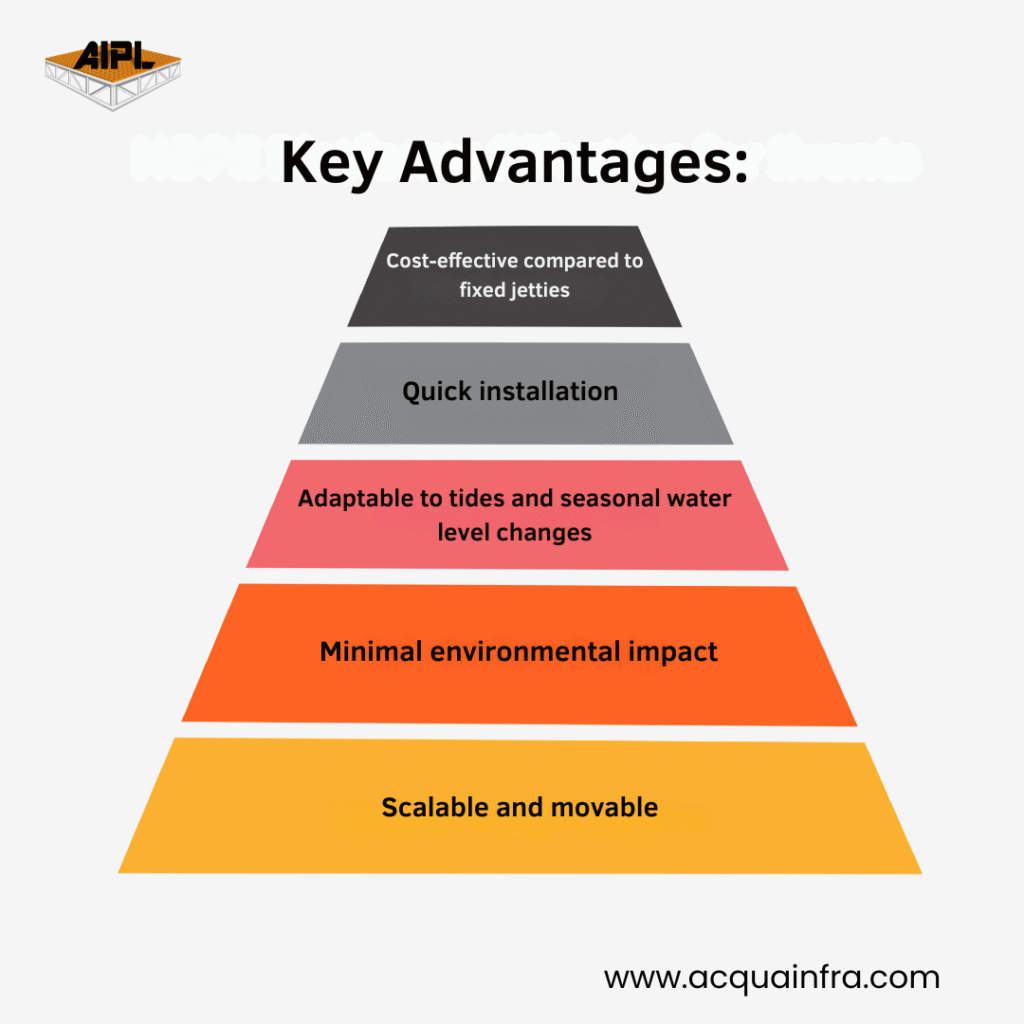
India, a country blessed with over 7,500 km of coastline and thousands of kilometers of navigable rivers, has immense untapped potential in water-based tourism. While traditional jetties served their purpose for decades, the modern age demands infrastructure that’s flexible, scalable, and eco-friendly — and this is where floating jetties are making a significant difference.
Floating jetties aren’t just infrastructure — they’re enablers of experiences, and India is finally embracing this shift.
A floating jetty (also called a floating pontoon) is a platform structure that floats on water, providing a stable landing and boarding point for boats, ferries, and other watercraft. Made using modular pontoons, reinforced plastics, or concrete structures, they’re anchored using chains or piles, adjusting naturally to changing water levels.
Key Advantages:

Tourism is evolving — travellers today seek unique, safe, and seamless experiences. Destinations with easy water access, adventure boating, cruises, and island hopping attract larger crowds. Unfortunately, India’s reliance on outdated fixed jetties often creates bottlenecks.
Floating jetties solve this problem by:
Example:
Goa’s floating jetties at Britona and Panaji have significantly improved tourist access to inland water cruises and riverfront dining.
Recognizing their utility, the Ministry of Ports, Shipping and Waterways (MoPSW) is actively promoting floating jetties under the Sagarmala Programme. Notable projects include:
✔️ Seamless Tourist Experience:
Visitors enjoy hassle-free boarding without worrying about tides or slippery, old docks.
✔️ Eco-Friendly Infrastructure:
Floating jetties cause minimal disruption to the aquatic ecosystem compared to permanent piers.
✔️ Boost to Local Economy:
Adventure sports operators, boat rental businesses, and riverside vendors benefit from improved facilities.
✔️ Better Safety and Accessibility:
Ideal for the elderly, differently-abled, and children due to sturdy, anti-slip surfaces.
✔️ Seasonal Flexibility:
Temporary or movable jetties cater to seasonal tourist peaks without heavy infrastructure investment.
As India’s leading turnkey provider of floating infrastructure solutions, AIPL (Acquafront Infrastructure Pvt. Ltd.) is playing a pivotal role in advancing water-based tourism.
Services AIPL Offers:
Why Choose AIPL?
If you’re a resort, marina, or state tourism body seeking to enhance your water access infrastructure — AIPL has the expertise to deliver world-class solutions.
Contact AIPL Today to Plan Your Floating Tourism Project.
Q1. What is a floating jetty used for?
A floating jetty provides a stable, water-level-adaptive platform for boarding, mooring boats, or recreational purposes in water-based locations.
Q2. How are floating jetties eco-friendly?
They cause minimal disruption to the aquatic ecosystem and can be easily removed or relocated without permanent structural changes to water bodies.
Q3. How much does it cost to install a floating jetty in India?
Costs vary based on location, size, materials, and load capacity. Contact AIPL for a customized quotation.
Q4. Are these safe for tourists?
Yes. They’re designed with anti-slip surfaces, railings, and are anchored securely, making them safe for families, children, and elderly passengers.
Q5. What are some popular tourist spots in India using floating jetties?
Goa, Kerala backwaters, Daman-Diu, Chilika Lake, and Sundarbans are actively using floating jetties for tourism enhancement.
